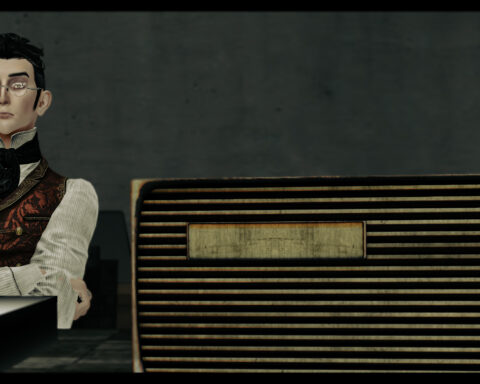Up against a deadline, Congress passed and sent a waiting President Barack Obama legislation late Wednesday night to avoid a threatened national default and end the 16-day partial government shutdown, the culmination of an epic political drama that placed the U.S. economy at risk.
The Senate voted first, a bipartisan 81-18 at midevening. That cleared the way for a final 285-144 vote in the Republican-controlled House about two hours later on the bill, which hewed strictly to the terms Obama laid down when the twin crises erupted more than three weeks ago.
The legislation would permit the Treasury to borrow normally through February 7th or perhaps a month longer, and fund the government through January 15th. More than 2 million federal workers would be paid – those who had remained on the job and those who had been furloughed.
After the Senate approved the measure, Obama hailed the vote and quickly signed the bill early Thursday. “We’ll begin reopening our government immediately, and we can begin to lift this cloud of uncertainty from our businesses and the American people,” the president said.
In the House, Rep. Harold Rogers, R-Ky., said, “After two long weeks, it is time to end this government shutdown. It’s time to take the threat of default off the table. It’s time to restore some sanity to this place.”
Republicans conceded defeat after a long struggle. “We fought the good fight. We just didn’t win,” conceded House Speaker John Boehner as lawmakers lined up to vote on a bill that includes nothing for GOP lawmakers who had demand to eradicate or scale back Obama’s signature health care overhaul.
Senate Republican leader Mitch McConnell, who negotiated the deal with Reid, emphasized that it preserved a round of spending cuts negotiated two years ago with Obama and Democrats. As a result, he said, “government spending has declined for two years in a row” for the first time since the Korean War. “And we’re not going back on this agreement,” he added.
Only a temporary truce, the measure set a time frame of early this winter for the next likely clash between Obama and the Republicans over spending and borrowing.
But for now, government was lurching back to life. Within moments of the House’s vote, Sylvia Mathews Burwell, director of the Office of Management and Budget, issued a statement saying “employees should expect to return to work in the morning.”
Boehner and the rest of the top GOP leadership told their rank and file in advance they would vote for the measure. In the end, Republicans split 144 against and 87 in favor. All 198 voting Democrats were supporters.
Tea party-aligned lawmakers who triggered the shutdown that began on October 1st said they would vote against the legislation. Significantly, though, Texas Sen. Ted Cruz and others agreed not to use the Senate’s cumbersome 18th-century rules to slow the bill’s progress. In remarks on the Senate floor, Cruz said the measure was “a terrible deal” and criticized fellow Republicans for lining up behind it.
McConnell made no mention of the polls showing that the shutdown and flirtation with default have sent Republicans’ public approval plummeting and have left the party badly split nationally as well as in his home state of Kentucky. He received a prompt reminder, though.
“There are no significant changes to Obamacare, nothing on the other major entitlements that are racked with trillions in unfunded liabilities, and no meaningful spending cuts either. If this bill passes, Congress will kick the can down the road, yet again,” the group said.
Even so, support for Boehner appeared solid inside his fractious rank and file. “There are no plots, plans or rumblings that I know of. And I was part of one in January, so I’d probably be on the whip list for that,” said Rep. Thomas Massie of Kentucky.
The U.S. Chamber of Commerce came out in favor of the bill. Simplicity at the end, there was next to nothing in the agreement beyond authorization for the Treasury to resume borrowing and funding for the government to reopen.
Additionally, Health and Human Services Secretary Kathleen Sebelius is to be required to produce a report stating that her agency is capable of verifying the incomes of individuals who apply for federal subsidies under the health care law known as Obamacare.
Obama had insisted repeatedly he would not pay “ransom” by yielding to Republican demands for significant changes to the health care overhaul in exchange for funding the government and permitting Treasury the borrowing latitude to pay the nation’s bills.
Other issues fell by the wayside in a final deal, including a Republican proposal for the suspension of a medical device tax in Obamacare and a Democratic call to delay a fee on companies for everyone who receives health coverage under an employer-sponsored plan.
The shutdown initially idled about 800,000 workers, but that soon fell to about 350,000 after Congress agreed to let furloughed Pentagon employees return to work. While there was widespread inconvenience, the mail was delivered, Medicare continued to pay doctors who treated seniors and there was no interruption in Social Security benefits.
Still, national parks were closed to the detriment of tourists and local businesses, government research scientists were sent home and Food and Drug Administration inspectors worked only sporadically.
((Sourced from National Post))








